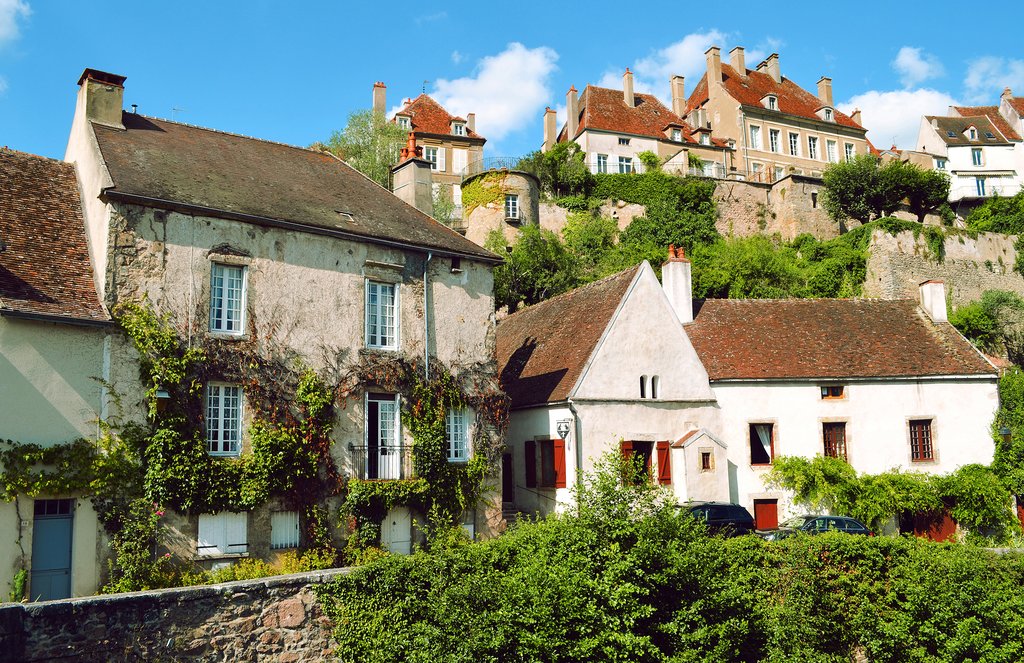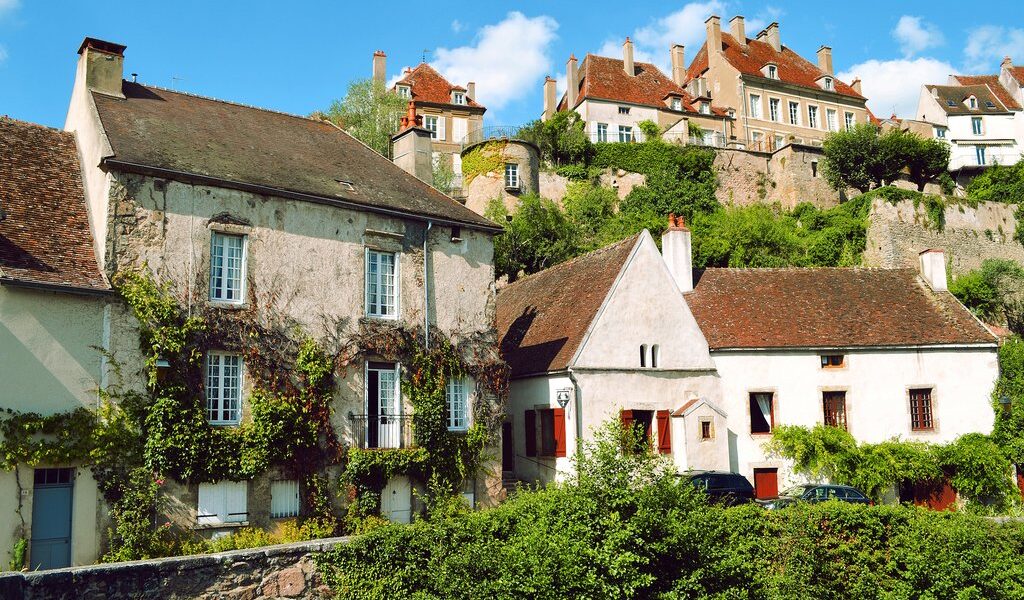
One of the lasts months to visit France on a budget, this low-season month packs a punch. From winter sports on world-class slopes and cozy après-ski environs to fewer crowds competing for Mona Lisa’s attention, there’s something for everyone in March. Read this monthly guide for more.
The month of March in France offers a unique travel experience, a shoulder season poised between the chill of winter and the burgeoning warmth of spring. The weather, crowds, and events each contribute to a distinctive atmosphere, making it a potentially ideal time to visit for those who know what to expect.
## Weather in March
While the mountainous regions retain a definite chill, the weather across France begins a noticeable and welcome transition in March. The days grow longer, the sun shines brighter, and the overall temperature trends upward. The overcast skies become less frequent, replaced by the promise of sunnier days.
If your travels bring you to **Paris**, you can anticipate an average temperature range fluctuating between 41 and 54 degrees Fahrenheit (5 to 12 degrees Celsius). While the likelihood of snowfall is relatively low, rainfall remains a factor, with an average of approximately 14 days of precipitation expected throughout the month. Therefore, packing an umbrella and layers of warm clothing is highly recommended to ensure comfort during your explorations of the city. Be prepared for potentially brisk mornings and evenings, but also for pleasant daytime temperatures ideal for strolling along the Seine or exploring the city’s many attractions.
Venturing into the **northeast** of the country, you should prepare for cooler conditions. Expect average low temperatures around 36 degrees Fahrenheit (2 degrees Celsius), accompanied by a higher possibility of encountering snow, particularly in the earlier part of the month. As March progresses, the weather gradually improves, with high temperatures reaching between 59 and 63 degrees Fahrenheit (15 to 17 degrees Celsius) towards the end of the month. The region can offer a mix of wintery remnants and the early hints of spring, providing diverse landscapes and experiences.
In **Atlantic France**, you can anticipate temperatures to reach approximately 55 degrees Fahrenheit (12 degrees Celsius) during the daytime. This region experiences a maritime climate, resulting in milder temperatures compared to the northeast. It’s a region where you can enjoy coastal walks and explore charming port cities.
Heading south to **southern France**, afternoon highs typically reach around 59 degrees Fahrenheit (15 degrees Celsius). The Mediterranean influence becomes more pronounced, resulting in warmer temperatures and sunnier skies. While the end of March may see the mercury rise to around 68 degrees Fahrenheit (20 degrees Celsius), the **Mediterranean** Sea itself remains relatively cool, averaging around 55 degrees Fahrenheit (13 degrees Celsius). It’s likely still too chilly for comfortable swimming, but the coastal areas are wonderful for enjoying the scenic beauty and charming towns.
## Crowds and Costs in March
March is generally considered part of the off-season in France, offering a significant advantage for travelers seeking to avoid the overwhelming crowds that characterize peak season. This is an excellent time to explore the country’s numerous attractions and cities at a more leisurely pace, without the long queues and bustling atmosphere.
Furthermore, the off-season translates to more budget-friendly travel opportunities. Flight deals are often more readily available, and hotels tend to offer more competitive prices compared to the peak summer months. This makes March an appealing option for those looking to experience France without breaking the bank.
However, it’s essential to note that March represents the tail end of the ski season in the French Alps. While the slopes may be less crowded than during the height of winter, you can still anticipate a considerable number of skiers and snowboarders, particularly on weekends. However, as the month progresses, ski package prices tend to decrease, offering potential savings for those planning a ski trip.
If your visit to France coincides with significant events like **Le Carnaval** or **Pâques** (Easter), it’s highly recommended to book your accommodations and make restaurant reservations well in advance. These events attract larger crowds, and popular venues can fill up quickly. Additionally, be aware that businesses may have altered opening hours or closures, and public transportation may operate on a holiday schedule during these periods.
## Where to Go in March
Early March presents an ideal opportunity to visit **Paris** for a captivating cultural exploration. Although the **Louvre** Museum and its iconic Mona Lisa will inevitably draw visitors, the crowds are significantly smaller compared to peak season, allowing for a more intimate and enjoyable experience. **Paris** can serve as the starting point or the culmination of your French adventure, or you can utilize the capital as a central hub for undertaking exciting day trips in and around the region. Renting a car or utilizing the efficient train network provides excellent options for exploring the surrounding areas.
If your holiday happens to coincide with Easter, prepare yourself for a delightful experience filled with delectable treats. Chocolate enthusiasts and film aficionados alike may want to consider a day trip to the incredibly charming village of **Flavigny-sur-Ozerain** in the Burgundy region. This picturesque village served as the primary setting for the beloved film *Chocolat*, starring Juliette Binoche and Johnny Depp.
For those seeking snowy adventures, the ski slopes in the French Alps remain active throughout March. To ensure optimal skiing conditions, it’s advisable to choose a resort situated at a higher altitude. **Val Thorens**, a purpose-built resort, offers an impressive 373 miles (600 km) of seemingly endless terrain. Alternatively, **Tignes** provides a snow-dependable option with 186 miles (300km) of runs serviced by 78 lifts.
Meanwhile, **Le Carnaval** festivities continue throughout the month, particularly in **South France**. If you find yourself in the region, be sure to visit **Nice** and immerse yourself in the vibrant celebration of spring alongside costumed revelers. Expect to witness captivating parades featuring costumed participants, talented musicians, skilled jugglers, and enormous theme-decorated floats. In addition, you can enjoy masked balls, delectable food festivals, and lively pageants.
Other towns situated along the **Mediterranean** coast also host their own unique celebrations marking the end of winter. Alternatively, smaller festivities take place along the eastern border, including in cities like **Dunkirk**, **Strasbourg**, and **Mulhouse**.
## What to Do in March
Even if you opt against embarking on a French road trip or a skiing/snowboarding holiday, you can still fully appreciate many of France’s major attractions without encountering the substantial crowds typically associated with peak season. This translates to shorter lines for admission to iconic landmarks such as the world-renowned **Eiffel Tower** in Paris, the magnificent **Château de Versailles**, and the **Château des ducs de Bretagne** (the Château of the Dukes of Brittany and Museum) in Nantes.
For food enthusiasts, a visit to **Nice** on the eastern end of the French Riviera is a must. Indulge in a gourmet food tour of the city’s historic core, Vieille Ville, and immerse yourself in the local culinary scene. Experience the vibrant atmosphere of the markets as vendors offer an array of sweet and savory symbolic treats.
For an truly decadent experience, plan a trip to the medieval town of **Sarlat** at the beginning of March. The town comes alive with festivities celebrating its regional specialty, foie gras. Arrive with an empty stomach, as this is essentially an all-you-can-eat event. And with Easter just around the corner, you won’t have to search far for dessert. Simply visit one of the many patisseries and chocolatiers, where you’ll find a delectable assortment of Easter candy and chocolates.
## Events in March
**Fête du Citron (Menton Lemon Festival)**: The charming town of **Menton**, known as the Cité des Citrons (City of Lemons), situated on the **French Riviera**, hosts a two-week spring festival that sometimes extends into March, celebrating the beloved citrus fruit. Parades featuring impressively large and ornately decorated fruit-covered floats procession along the streets, while vendors sell a diverse array of lemon-based products, including refreshing drinks, flavorful jams, fragrant soaps, and exquisite perfumes.
**Sarlat Fest’Oie**: During the first weekend of March, **Sarlat** hosts the Fest’Oie, a celebration of foie gras and regional products. The event features cooking demonstrations and workshops aimed at promoting local culinary traditions.
**Cerfs Volants (Berck-Sur-Mer Kite Festival)**: Every year in March and April, the charming seaside town of **Berck-Sur-Mer** welcomes international kite-flying competitors who gather on its beaches to showcase an impressive assortment of colorful kites. Participants compete against one another and against the wind, creating a mesmerizing spectacle.
**Le Carnaval**: Held annually 40 days before Easter on the liturgical calendar, France’s Carnival celebrations typically occur sometime between January and April but often fall in February. The **Carnaval de Nice** attracts over one million visitors to the **French Riviera** and is arguably one of the most famous events of its kind in the world, with festivities lasting for two weeks.
**Pâques (Easter and Holy Week)**: Because Easter follows the liturgical calendar, it does not occur on the same day each year. In some years, it does not even fall in March. If Easter does happen to occur in March, be sure to immerse yourself in the celebrations and processions taking place throughout the country. Be aware that closures are typically observed on *Vendredi Saint* (Good Friday), *Lundi de Pâcques* (Easter Monday), and Sunday.
B-871

